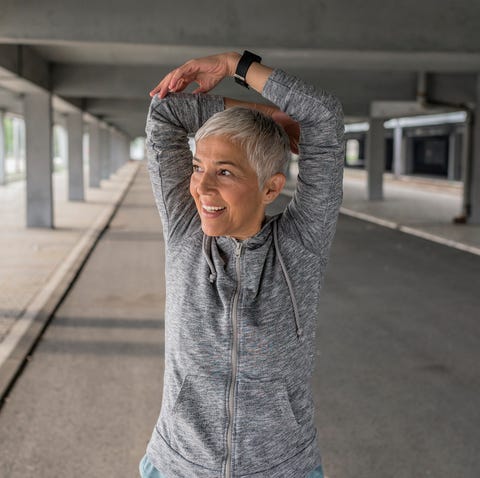How to Take the Perfect Nighttime Bath or Shower That Will Put You to Sleep
New research shows the optimal time and temperature in order to wind down for the night.
By Danielle Zickl
Aliaksandra Ivanova / EyeEmGetty Images
- According to a new study published in the journal Sleep Medicine Reviews, taking a hot shower or bath one to two hours before bedtime can help you fall asleep faster.
- This is because your body temperature plays an important part in regulating your sleep/wake cycle.
- However, if you take a shower or bath too close to bedtime, it’s too late to have any effect—and it may even disrupt the natural circadian process controlling sleep.
Getting a good night’s sleep is important not only for our performance as an athlete, but also so we don’t feel like a zombie going about our other daily activities and responsibilities. Sipping a cup of tea, reading, or meditating are all things that help people wind down before bed.
But how about a sleep aid that pulls double duty? Taking a warm bath or shower—you needed to do that anyway, right?—can help you get an adequate amount of shuteye, according to a new review published in Sleep Medicine Reviews.
Researchers at the University of Texas at Austin reviewed 5,322 studies to figure out if “water-based passive body heating”—a.k.a. a warm shower or bath—before bedtime can help improve sleep. They looked at how presleep showers or baths affected things like how long it takes to fall asleep, total sleep time, sleep quality, and sleep efficiency—or the ratio of total sleep time to time spent in bed.
Their findings? When people took a bath or shower that was between 104 and 109 degrees Fahrenheit one to two hours before they wanted to head to bed, they were able to fall asleep about 10 minutes faster on average. According to lead study author Shahab Haghayegh, Ph.D.(c), of UT Austin’s department of biomedical engineering, body temperature is important in regulating your sleep/wake cycle.
“It’s an essential factor in achieving rapid sleep onset and high-efficiency sleep,” Haghayegh told Bicycling. Translation: It makes you nod off faster and spend more time in bed actually sleeping as opposed to just laying there staring at the ceiling.
Warm baths and showers stimulate the body’s thermoregulatory system—or the system that regulates your body’s core temperature, Haghayegh said.
“Therefore, if baths are taken at the right biological time—one to two hours before bedtime—they will aid the natural circadian process and increase one’s chances of not only falling asleep more quickly, but and getting better sleep.”
In other words, the hot water raises your body temperature, and the resulting fall in your body temperature as you cool off mimics the drop in body temperature that signals it’s time to go to sleep.
However, if you take a shower or bath too close to bedtime, Haghayegh said, it’s too late to have any effect—and it may even disrupt the natural circadian process controlling sleep.
But not everyone knows exactly what temperature their bath or shower water is. So how can you tell that your bath water is the right temperature if you don’t have a thermometer handy?
According to Haghayegh, your water temperature should feel warm to a little hot. So as long as you feel comfortably hot—but not hot enough that you’re scalding your skin—that should be about the right temperature.
The bottom line? Taking a hot bath or shower one to two hours before hitting the hay can help you get to sleep faster and stay asleep longer.
Danielle Zickl Associate Health & Fitness Editor Danielle specializes in interpreting and reporting the latest health research and also writes and edits in-depth service pieces about fitness, training, and nutrition.











 mx43
mx43